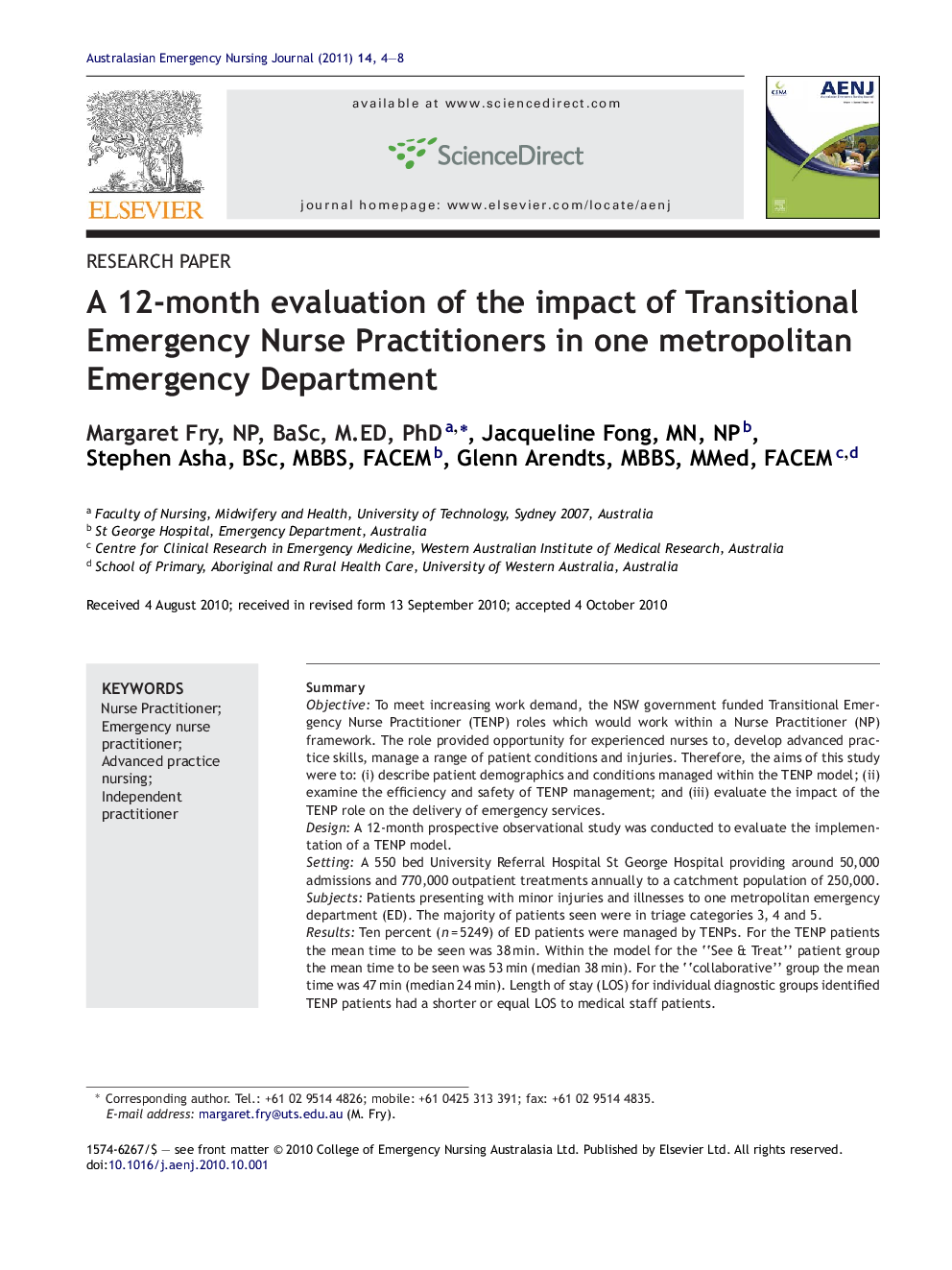| Article ID | Journal | Published Year | Pages | File Type |
|---|---|---|---|---|
| 2605655 | Australasian Emergency Nursing Journal | 2011 | 5 Pages |
SummaryObjectiveTo meet increasing work demand, the NSW government funded Transitional Emergency Nurse Practitioner (TENP) roles which would work within a Nurse Practitioner (NP) framework. The role provided opportunity for experienced nurses to, develop advanced practice skills, manage a range of patient conditions and injuries. Therefore, the aims of this study were to: (i) describe patient demographics and conditions managed within the TENP model; (ii) examine the efficiency and safety of TENP management; and (iii) evaluate the impact of the TENP role on the delivery of emergency services.DesignA 12-month prospective observational study was conducted to evaluate the implementation of a TENP model.SettingA 550 bed University Referral Hospital St George Hospital providing around 50,000 admissions and 770,000 outpatient treatments annually to a catchment population of 250,000.SubjectsPatients presenting with minor injuries and illnesses to one metropolitan emergency department (ED). The majority of patients seen were in triage categories 3, 4 and 5.ResultsTen percent (n = 5249) of ED patients were managed by TENPs. For the TENP patients the mean time to be seen was 38 min. Within the model for the “See & Treat” patient group the mean time to be seen was 53 min (median 38 min). For the “collaborative” group the mean time was 47 min (median 24 min). Length of stay (LOS) for individual diagnostic groups identified TENP patients had a shorter or equal LOS to medical staff patients.ConclusionThe study demonstrated that TENPs provide timely, efficient and appropriate patient management. The role has led to increased recognition of nursing expertise along with acceptance by colleagues and peers for the contribution TENPs make to ED services.
